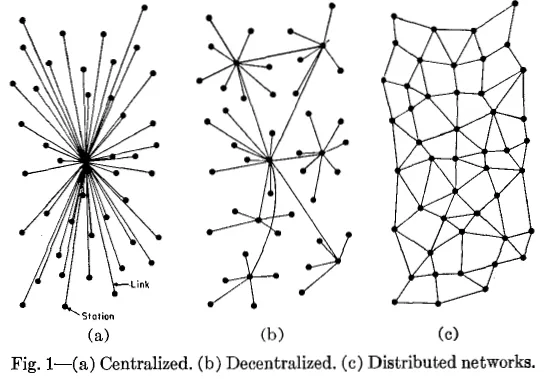
Above is the often used image of the difference between centralized, decentralized, and distributed networks. Despite its ubiquity, it is, in my opinion, a bit inadequate since a and b both describe client/server relationships, and c seems to leave out the client. So imagine that there are clients connecting into the distributed network on the right, and benefitting from all the connections therein.
Protocols are what drive the connections between nodes in distributed systems, and while its uncommon for these systems to use multiple protocols, there's no real reason for them not to. So let's imagine some set of protocols P such that any subset of P is sufficient for establishing networking between nodes in a distributed fashion. We can then imagine three nodes N, SN, and S'N where N aggregates responses from one system S, and another system S'; SN is a node in S, and S'N is a node in S'.